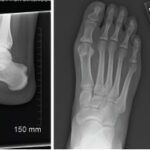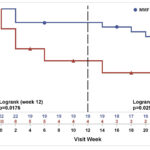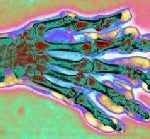A presentation at ACR Convergence 2021 discussed the 2020 ACR Guideline for the Management of Gout, the latest information on the risk of cardiovascular death associated with febuxostat and the use of pegloticase for patients with gout.



A presentation at ACR Convergence 2021 discussed the 2020 ACR Guideline for the Management of Gout, the latest information on the risk of cardiovascular death associated with febuxostat and the use of pegloticase for patients with gout.

Ibrahem Salloum, MD, & Deepan S. Dalal, MD, MPH |
Discovered more than 3,000 years ago, colchicine is one of the oldest drugs still in use today. Like most old remedies, colchicine is a chemical substance found in many plants, most notably in colchicum autumnale, known as wild saffron or autumn crocus. It was mentioned in the oldest Egyptian medical text, Ebers Papyrus (circa 1550…

Rebecca Lindsey Weiner, DO, & Ann K. Rosenthal, MD, FACP |
Gout is the most common type of inflammatory arthritis in adults, and it typically occurs in men over the age of 50. When gout presents in younger patients or in women, this should warrant consideration of secondary causes. We describe an unusual genetic cause of tophaceous gout in a young, premenopausal woman. Case Report In…

Pegloticase is safe and effective to treat patients with refractory gout who are undergoing dialysis, according to recently presented research.

Puja Khanna, Dinesh Khanna, Gary Cutter, Jeffrey Foster, Joshua Melnick, Sara Jaafar, Stephanie Biggers, AKM Rahman, Hui-Chen Kuo, Michelle Feese and Kenneth Saag |
Short-term concomitant use of MMF with pegloticase was generally well tolerated in this proof-of-concept study. It was associated with a statistically significant and clinically meaningful impact on the proportion of subjects achieving and maintaining a sUA ≤6 mg/dL at 24 weeks. See the abstract with bonus video discussing the validation of proposed remission and completion criteria for the treatment of gout.

In light of the release of the ACR’s new gout guideline, it’s not surprising that 50 abstracts of studies on various aspects of gout were accepted at ACR Convergence 2020. Here, we highlight just a few:

ACR Convergence 2020—In May 2020, the ACR published its updated guideline for the management of gout.1 It followed on the heels of a 2017 gout guideline published by the American College of Physicians.2 Although the guidelines provide similar recommendations on the treatment of acute gout, they differ importantly in the use of uric acid-lowering therapy…

Rheumatologists who are outstanding clinicians and provide consistent, exceptional care to patients are in the spotlight in our Lessons from a Master Clinician series. Here, we present insights from a clinician who has achieved distinction in the field of rheumatology, serving as a role model for colleagues and trainees. Alan Baer, MD, is currently a…

Acute gout can be very painful, causing patients to seek treatment in the emergency department. A retrospective study of pain interventions for gout in Rhode Island found that nearly 30% of patients received prescriptions for opioid medications over 30 months. Of these prescriptions, over 80% were for patients who had never been exposed to opioids…

Larry Beresford |
The umbrella term crystalline disease covers arthritic conditions caused by deposition of crystals and associated inflammatory response, including erythema, edema and intense pain. The two most common crystal-induced arthropathies are gout, an arthritis secondary to inflammation caused by the presence of monosodium urate (MSU) crystals formed through high levels of serum urate, and calcium pyrophosphate…